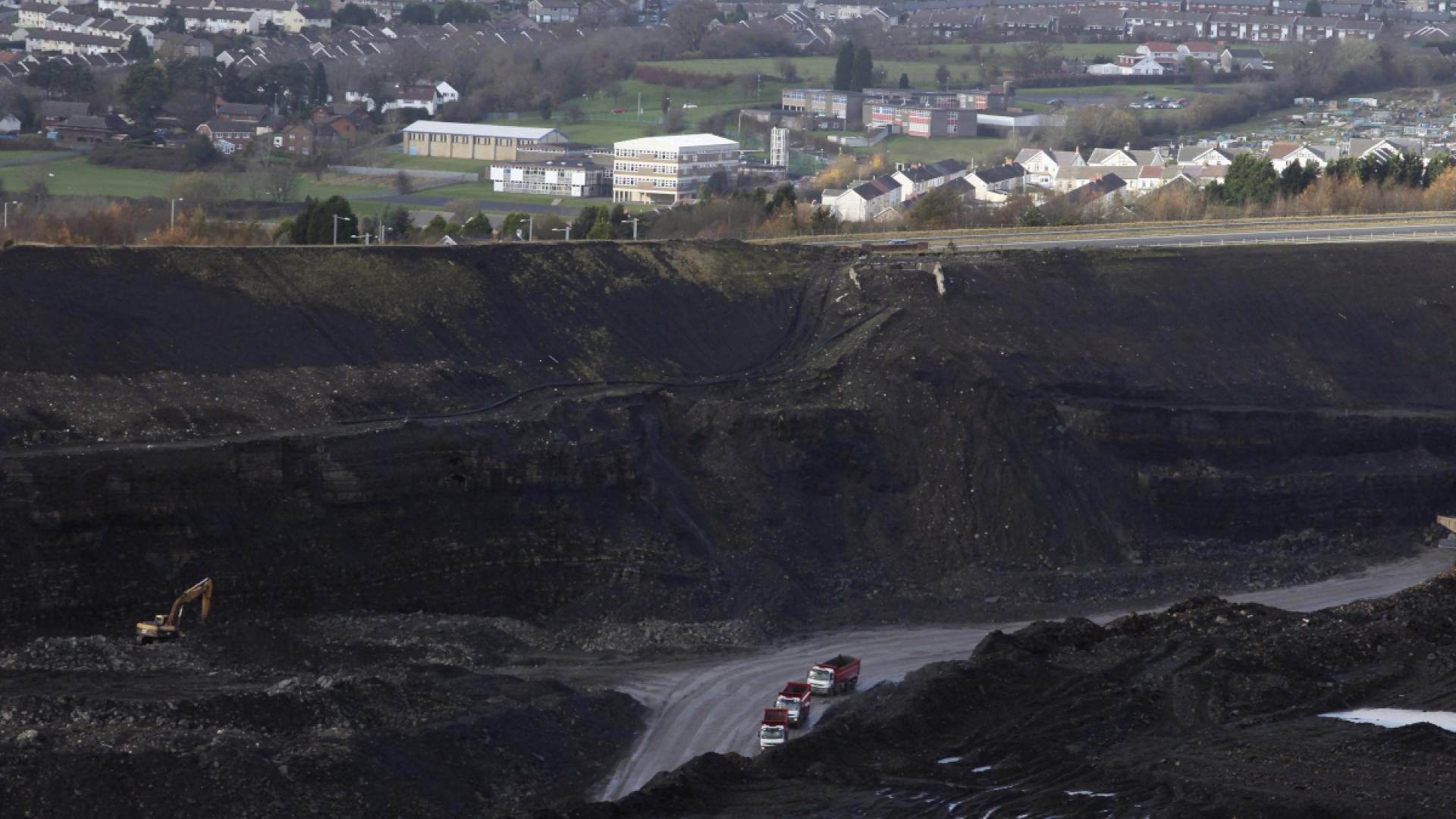10 May 2019
Renewable energy is driving the decline of electricity from coal in the UK – so much so that we've got too much coal to burn and definitely don't need more.
Government data1 shows that:
- The forecast for electricity from coal between 2020 and 2025 has fallen by 95% compared to last year’s projection.
- Coal stocks held at power stations are more than enough to generate the projected amount of electricity.
This must put paid to the proposed new coal mine at Druridge Bay – and any new mines or further imports of coal.
Government pledge to end electricity generation from coal
The government has said that unabated generation of electricity from coal will end in 20252.
It has not yet brought in legislation to implement this.
Coal use for electricity is declining fast
Coal-fired electricity generation is in steep decline3, 4.
The amount of coal used for electricity generation in 2018 (6.65 million tonnes) was 23.7% lower than in 2017 (8.72 million tonnes) – and 86.7% lower than in 2013 (49.87 million tonnes).
Energy from renewables is rising fast
The government specifically mentions “the rise in renewables reducing the need for coal-fired generation” as a reason for the decline in coal use in 20185.
Generation of electricity from renewables in 2018 (111.1 TWh) was 11.8% higher than in 2017 (99.3 TWh) and 108% higher than in 2013 (53.2TWh)6, 7.
Electricity from coal projections
In its latest projections, the government estimates that 2.17 TWh of electricity will be generated from coal between 2020 and 20258. This is 95% lower than the projection of 48.73 TWh made for the same period in the previous set of projections9.
If electricity generation from coal in 2019 (projected at 2.03 TWh) is included, total generation from the start of this year to 2025 is 4.2 TWh.
How much coal is needed?
Generating 1 TWh of electricity uses approximately 400,000 tonnes of coal.
For example, in 2017, the UK used 8.7 million tonnes of coal to generate 22.5 TWh of electricity. Each terawatt hour used 386,000 tonnes of coal10.
Therefore, generating 4.2 TWh of electricity will require approximately 1.68 million tonnes of coal.
How much coal is already stockpiled?
Further recent figures published by the government assess the amount of coal held in stockpiles in the UK.
This shows that total coal stocks at the end of 2018 were 5.2 million tonnes, with 4.1 million tonnes of this held at power stations11.
This is clearly substantially more than will be needed to generate the estimated electricity from coal from now to 2025.
What does this mean?
From this analysis, Friends of the Earth concludes that:
- No further coal mining – opencast or deep-mine – is needed to produce coal for power generation.
- No further imports of coal for power generation are needed.
What decisions is the government taking?
Communities Secretary James Brokenshire is deciding whether to grant planning permission for the Druridge Bay opencast coal mine (also known as Highthorn) in Northumberland, and to revoke planning permission for the Bradley opencast coal mine in Durham.
Mr Brokenshire’s predecessor Sajid Javid refused planning permission for the Druridge Bay site in March 2018 but the operators, Banks Mining, successfully appealed against the decision, which was quashed and is now being re-considered.
Operations started at the opencast mine at Bradley in Durham last summer, after James Brokenshire rejected calls to revoke planning permission.
However Mr Brokenshire did not adequately explain his decision, and is re-making the decision in response to a judicial review brought by residents.
Mr Brokenshire is due to announce his decisions on or before 13 June.
Could the coal be used in industry?
Banks Mining, who want to develop the Druridge Bay site, initially said that the coal would be used purely for power generation.
In Highthorn Planning Application and Environmental Statement, chapter 3, Banks Mining states that the benefits of the scheme comprise "a) Supply of indigenous coal for UK power generation, responsibly extracted b) Supporting the current and future economy of Northumberland c) Enhancing Druridge Bay"12.
Banks now appear to be suggesting that the coal could be used in industry. Coal is currently used in, for example, the steel and cement industries.
The Inspector at the public inquiry into the Druridge Bay proposal recommended that planning permission be granted – a recommendation reversed by Sajid Javid in March 2018.
This recommendation was on the basis that there was a ‘window’ for using the coal for power generation before the 2025 phase-out, and the Inspector added that:
“if the Secretary of State were to conclude, on the basis of the available evidence, that no such ‘window’ exists for coal-fired generation, then the need for, and benefits of, Highthorn coal would be much diminished. The planning balance then would be fundamentally altered, and in those circumstances, I consider that there would be a strong case for refusing the planning application”13.
Recommendations
Friends of the Earth calls on the government to refuse planning permission for the proposed Druridge Bay opencast coal mine (also known as Highthorn) and revoke planning permission for the Bradley opencast coal mine.
- 1Revised Energy & Emissions Projections, published in mid-April 2019, see https://www.gov.uk/government/publications/updated-energy-and-emissions-projections-2018
- 2BEIS, Implementing the end of unabated coal by 2025, see https://assets.publishing.service.gov.uk/government/uploads/system/uploads/attachment_data/file/672137/Government_Response_to_unabated_coal_consultation_and_statement_of_policy.pdf
- 3Figures from Energy Trends, 2019, Table 2.1, see https://assets.publishing.service.gov.uk/government/uploads/system/uploads/attachment_data/file/791293/Energy_Trends_March_2019.pdf
- 4Digest of UK Energy Statistics, 2018, Table 2.4, see https://www.gov.uk/government/statistics/solid-fuels-and-derived-gases-chapter-2-digest-of-united-kingdom-energy-statistics-dukes
- 5Energy Trends, 2019, section 2, see https://assets.publishing.service.gov.uk/government/uploads/system/uploads/attachment_data/file/791293/Energy_Trends_March_2019.pdf
- 6Figures from Energy Trends, 2019, Table 6.1, see https://assets.publishing.service.gov.uk/government/uploads/system/uploads/attachment_data/file/791293/Energy_Trends_March_2019.pdf
- 7UK Energy in Brief, 2018, Table 28, see https://www.gov.uk/government/statistics/uk-energy-in-brief-2018
- 8Energy & Emissions Projections, 2018, Annex J – data from Reference Scenario, see https://www.gov.uk/government/publications/updated-energy-and-emissions-projections-2018
- 9Energy & Emissions Projections, 2017, Annex J – data from Reference Scenario, see https://www.gov.uk/government/publications/updated-energy-and-emissions-projections-2017
- 10Data from UK Energy in Brief, 2018, p19 and p27, see https://assets.publishing.service.gov.uk/government/uploads/system/uploads/attachment_data/file/728374/UK_Energy_in_Brief_2018.pdf
- 11Energy Trends March, 2019, p18, see https://assets.publishing.service.gov.uk/government/uploads/system/uploads/attachment_data/file/791293/Energy_Trends_March_2019.pdf
- 12Banks Mining, Highthorn Planning Application and Environmental Statement, chapter 3, see https://www.banksgroup.co.uk/core/uploads/Environmental-Statement.pdf
- 13Planning Inspectorate, Report to the Secretary of State for Communities and Local Government, Application by HJ Banks & Co Ltd to Northumberland County Council, see https://www.gov.uk/government/publications/called-in-decision-land-at-highthorn-widdrington-northumberland-ne61-6ee-ref-3158266-23-march-2018


